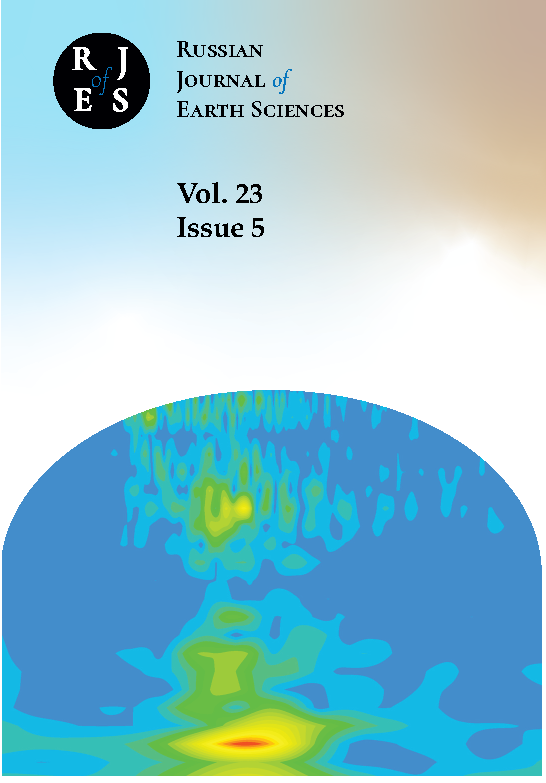с 01.01.1985 по настоящее время
Институт динамики геосфер РАН
Махачкала, Республика Дагестан, Россия
с 01.01.1994 по настоящее время
Дагестанский государственный институт народного хозяйства
Махачкала, Республика Дагестан, Россия
Томский государственный университет (Факультет естественных наук)
Москва, г. Москва и Московская область, Россия
УДК 550.3 Геофизика
УДК 532.685 Движение жидкостей в пористых телах
УДК 532.71 Осмос
УДК 551.345 Многолетние мерзлые грунты. Многолетняя мерзлота
УДК 55 Геология. Геологические и геофизические науки
УДК 550.34 Сейсмология
УДК 550.383 Главное магнитное поле Земли
ГРНТИ 37.01 Общие вопросы геофизики
ГРНТИ 37.15 Геомагнетизм и высокие слои атмосферы
ГРНТИ 37.25 Океанология
ГРНТИ 37.31 Физика Земли
ГРНТИ 38.01 Общие вопросы геологии
ГРНТИ 36.00 ГЕОДЕЗИЯ. КАРТОГРАФИЯ
ГРНТИ 37.00 ГЕОФИЗИКА
ГРНТИ 38.00 ГЕОЛОГИЯ
ГРНТИ 39.00 ГЕОГРАФИЯ
ГРНТИ 52.00 ГОРНОЕ ДЕЛО
ОКСО 05.00.00 Науки о Земле
ББК 26 Науки о Земле
ТБК 63 Науки о Земле. Экология
BISAC SCI SCIENCE
The paper presents a mathematical model of rocks freezing saturated with salt solution under impact of osmotic force. Osmosis is related to the salt concentration gradient, which is characteristic for solutions, and it is a powerful mechanism for the movement of solutions in poorly permeable porous media. A mathematical criterion for the formation of closed “pockets” with brines (cryopags) in frozen rocks has been obtained. This criterion is shown to be significantly depends on the osmosis coefficient. The model includes three layers of a porous medium saturated, respectively, with ice, ice and solution, and salt solution only. A special case was studied when there is only a second layer with a movable boundary, on which a phase transition from the second layer to the third one occurs. The investigated layer is saturated with a salt solution and ice in thermodynamic equilibrium. Other layers are replaced by boundary conditions. An approximate analytical solution of the problem is found in a self-similar formulation. The nature of the influence of osmotic force on the freezing process of rocks saturated with solution is shown. The characteristic patterns associated with the considered process are revealed. One of the features of the osmosis influence is the fact that it can cause the movement (migration) of the solution in the direction of increasing pressure, i.e. in the direction opposite to the driving force caused by the pressure gradient.
osmosis, freezing, porous medium, salt solution, filtration, phase transition
1. Chuvilin, E. M. (1999), Migration of ions of chemical elements in freezing and frozen soils, Polar Record, 35(192), 59-66, https://doi.org/10.1017/s0032247400026346.
2. Kemper, W. D. (1961), Movement of Water as Effected by Free Energy and Pressure Gradients: II. Experimental Analysis of Porous Systems in Which Free Energy and Pressure Gradients Act in Opposite Directions, Soil Science Society of America Journal, 25(4), 260-265, https://doi.org/10.2136/sssaj1961.03615995002500040010x.
3. Landau, L. D., and E. M. Lifshitz (1976), Theoretical Physics: Volume 5, Nauka, Moscow (in Russian).
4. Lobkovskii, L. I., and M. M. Ramazanov (2018), Front Regime of Heat and Mass Transfer in a Gas Hydrate Reservoir under the Negative Temperature Conditions, Fluid Dynamics, 53(4), 517-530, https://doi.org/10.1134/s0015462818040092.
5. Ramazanov, M. M., A. V. Karakin, and L. I. Lobkovskiy (2019), Mathematical Model for the Motion of Solutions Taking into Account the Osmotic Effect, Doklady Earth Sciences, 489(1), 1306-1309, https://doi.org/10.1134/s1028334x19110060
6. Ramazanov, M. M., N. S. Bulgakova, and L. I. Lobkovskiy (2022), Osmotic Convection, Doklady Physics, 67(5), 153-158, https://doi.org/10.1134/s1028335822040061.
7. Shakhova, N., I. Semiletov, O. Gustafsson, V. Sergienko, L. Lobkovsky, O. Dudarev, V. Tumskoy, M. Grigoriev, A. Mazurov, A. Salyuk, R. Ananiev, A. Koshurnikov, D. Kosmach, A. Charkin, N. Dmitrevsky, V. Karnaukh, A. Gunar, A. Meluzov, and D. Chernykh (2017), Current rates and mechanisms of subsea permafrost degradation in the East Siberian Arctic Shelf, Nature Communications, 8(1), https://doi.org/10.1038/ncomms15872.
8. Tsypkin, G. G. (2009), Flows with phase transitions in porous media, Fizmatlit, Moscow (in Russian)
9. Yakushev, V. S. (2009), Natural gas and gas hydrates in permafrost, VNIIGAZ, Moscow (in Russian)















